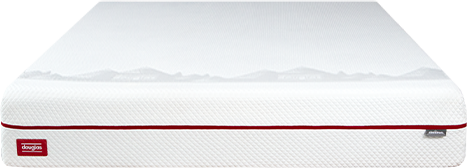We review Canada’s top mattress brands.
It pays to know more about your mattress. Our in-depth reviews of leading mattress brands give you the information you need to get the kind of sleep you deserve. Research the industry’s top brands and use our overall ratings (based on 40+ scoring criteria) to see which mattress is right for you.
Explore the mattress industry’s leading brands.
Shop the latest mattress deals.
Find the right mattress based on your specific needs.
Shop mattresses by size.
Learn how we test our mattresses.
This allows us to accurately rate and compare the performance of the mattresses reviewed on this website. Engineer independence and operating standards help ensure their results remain unbiased, valid, and reliable.
Each mattress was evaluated using the same strict mattress testing methodology to protect the overall integrity of the results. Foam and hybrid mattress test results are scored on separate scales to ensure fair contextual performance representation as much as possible. The full report has been given the official stamp of approval from an APEGA-certified engineer operating under a strict ethical code of conduct.
Mattress testing conducted outside of this professional standard poses a greater risk of validity errors or reviewer bias.

Firmness
Our third-party engineers use a 170 lb mannequin to simulate the weight distribution of the average human body. To test for firmness, engineers place the mannequin in the middle of the mattress and measure how far down it sinks. The deeper the mannequin sinks, the softer the mattress is.
Firmness is a matter of personal preference as a sleeper, so we don't have an "average" rating for this category. However, we still rate firmness on a scale of 1–10.

Edge Support
Edge support determines how supportive the mattress is when you're sitting on or lying close to the edge. For testing purposes, engineers place a 170 lb mannequin at various edge points along the perimeter of the mattress. If there is a low degree of sinking, the mattress has high edge support. If there is a high degree of sinking, the mattress has low edge support.
On a scale of 1–10, we consider an edge support score of 5.0+ to be an average rating.

Motion Isolation
This is how much you'll feel your partner's movements (or vice versa) while you're lying on the mattress. To test this, engineers drop a 10-pound medicine ball onto the top of the mattress. An accelerometer then measures the vibrations created by the impact. Lower vibrations mean a higher motion isolation score, while higher vibrations translate to a lower score.
On a scale of 1–10, we consider a motion isolation score of 5.0+ to be an average rating.

Bounce
Bounce is defined by how much the mattress gives way when you lie on it, and how much it pushes back against sudden body motion. Engineers test this by dropping a 10-pound medicine ball from a fixed point, and measuring the initial bounce after it rebounds against the mattress. The higher this first bounce is, the higher the score.
Bounce is a matter of personal preference as a sleeper, so we don't have an "average" rating for this category. However, we still rate bounce on a scale of 1–10.































































